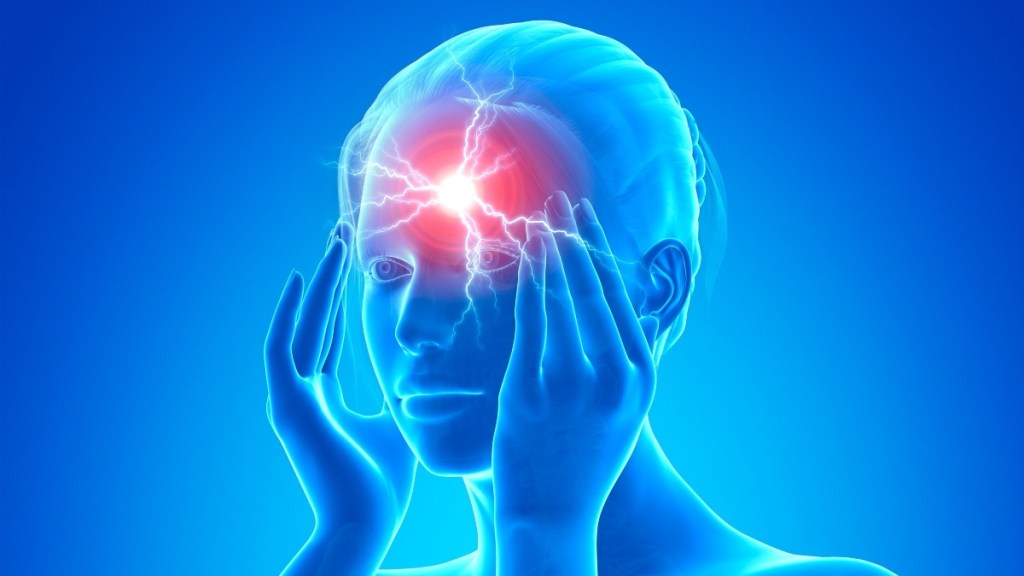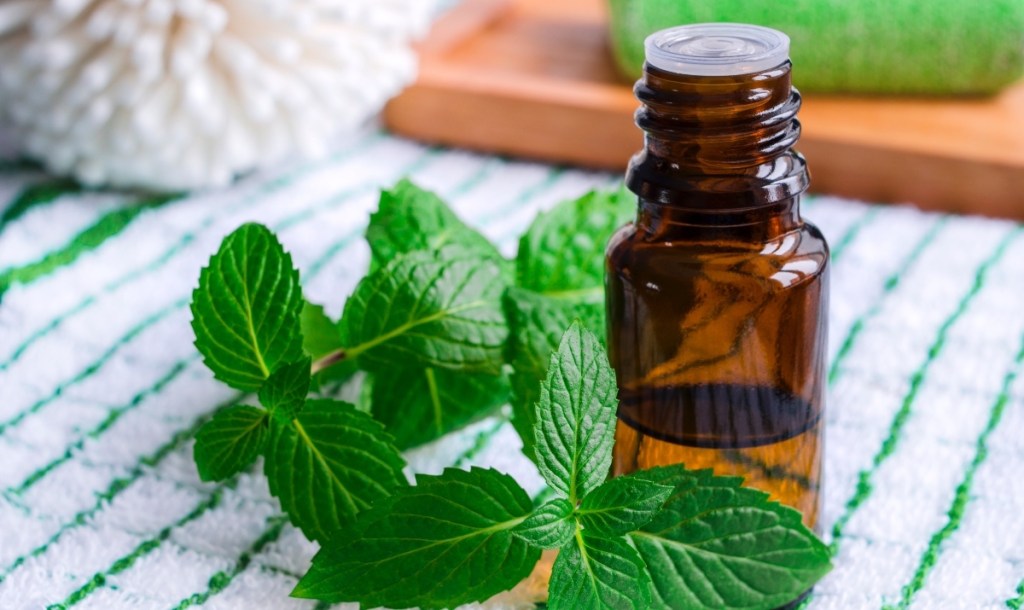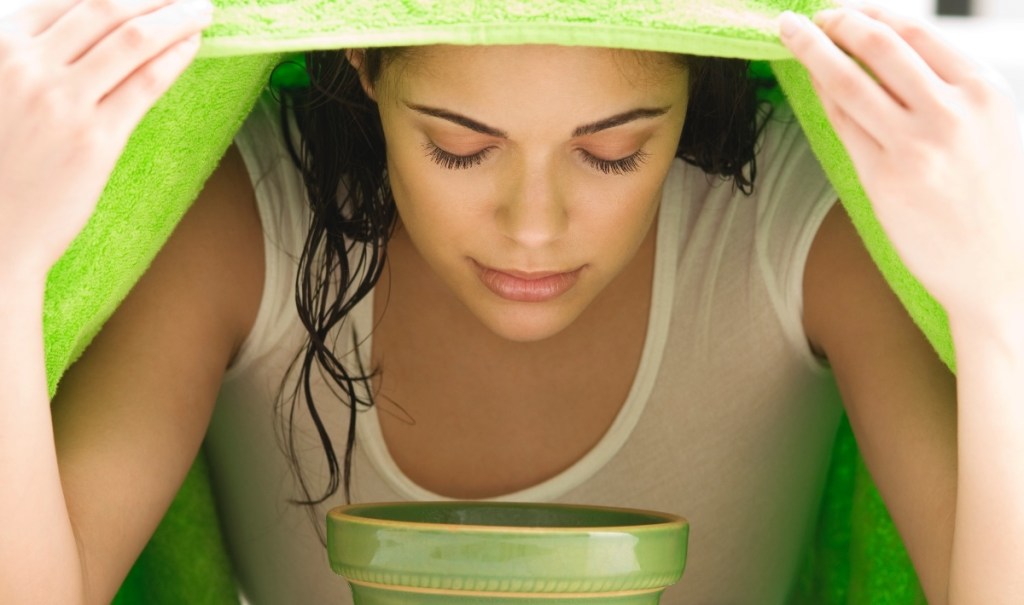MD Reveals the Best Remedies for Headaches That Involve Pain Behind The Eyes
Discovering the source of the pain can point you to a natural remedy that works better than an Rx med

When head pain strikes, it can be hard to focus on anything else. Even worse? When the throbbing and pressure spreads behind your eyes, too. “Because there are multiple possible causes for headache around the eye, diagnosis is complex,” says Nina Riggins, MD, PhD, a neurologist and headache specialist at UC San Diego Health. While the exact cause isn’t always known, some of the most common reasons for a headache behind the eyes include sinus pain, tension headaches and migraines. Read on to discover the root cause of your discomfort — and how to cure it naturally.
The most common causes of headaches behind the eyes
Pain behind the eyes, also known as retro orbital pain, can be a symptom of several different types of headaches. One of the most common is a migraine flare up. Migraines are characterized by a severe throbbing pain, usually on one side of the head. Many people also experience sensitivity to light, nausea and visual disturbances or flashes of light known as a migraine aura.
Another top cause of pain behind the eyes are tension headaches, in which you feel like a tight band is wound around your head. When these occur, the muscles in your neck or scalp painfully contract, often due to stress or anxiety. “We need to address pain and moods together,” Dr. Riggins says. “Stress can trigger headache, but it’s also important to understand that pain can be stressful for a person with it.” (Learn how tense jaw muscles can cause head pain, too — and how a masseter massage can provide relief.)
And for folks prone to sinus trouble, a sinus headache can lead to pain and pressure around your eyes, forehead and cheeks. Finally, though not technically a headache, eye strain brought on by too much time spent on digital devices can lead to an uncomfortable ache behind your eyes.

Why chose a natural cure for a headache behind the eyes
Sure, you know that eating healthy, staying hydrated, being active and clocking enough sleep can help you feel your best. “For some people, these things can be as powerful as our strongest medications,” Dr. Riggins emphasizes. Treatment-wise, “the doctors’ toolbox has expanded very much in the last 10 years.” And that include more natural remedies.
Why consider natural cures? While over-the-counter and prescription headache medications abound, they can be pricy and trigger unwanted side effects such as nausea, dry mouth, fatigue and dizziness. What’s more, regularly relying on the meds can cause what’s known as medication-overuse headache, or a rebound headache. This happens when pain relievers themselves start to trigger head pain after frequent use.
The best natural cures for a migraine with pain behind the eyes
Massage your temples with peppermint oil
Massaging your temples and forehead with zingy peppermint oil can relieve migraine pain while also alleviating nausea and light sensitivity that can accompany these headaches, according to a study in the International Journal of Clinical Practice. The active ingredient in peppermint oil, menthol, has pain-relieving and anti-nausea properties.
Plus it helps to dilate blood vessels, improving blood flow to ease migraine pain. To do: Add 20 drops of peppermint essential oil to 4 Tbs. of vegetable oil. Shake well, then gently massage a small amount of oil into your temples and forehead using a circular motion until it’s absorbed. Relax and let menthol work its migraine-relieving magic!

Relax with a gel pack over your eyes
Fill a large zip-top bag with 2 cups of water and 1 cup of rubbing alcohol, then seal it closed and pop it in the freezer. When a migraine strikes, grab the homemade gel pack (the alcohol prevents the water from fully freezing), slip it into a pillowcase and drape it over your closed eyes.
Research in Evidence-Based Complementary and Alternative Medicine suggests this type of cold therapy calms a burgeoning migraine for 71% of folks. Dr. Riggins often recommends a cold pack as well. How does it work? It blocks out light, which can worsen a migraine flare, while the burst of cold begins to short-circuit pain signals in as little as three minutes. (See how cold water tones the vagus nerve to reverse the effects of chronic stress.)
Supplement with ginger capsules
Taking 250 mg. of ginger capsules at the first sign of pain slashes migraine pain by 90% within two hours, according to a study in the journal Phytotherapy Research. Those are results on par with the medication sumatriptan (and without the side effects)!
Ginger boosts serotonin levels in the brain, which reduces migraine-causing inflammation and blood flow. This action is similar to the way that medications such as sumatriptan fight migraine pain. One to try: Doctor’s Best High Potency Ginger Root Extract (Buy from Vitacost.com, $15.49). (Click through to see how ginger relieves stress.)
The best natural cures for a tension headache with pain behind the eyes
Slip on a night guard before bed
If your tension headache flares before you even get out of bed, chances are nighttime teeth grinding or jaw clenching is to blame. Also known as bruxism, stress-triggered teeth grinding has increased 69% since 2020, say American Dental Association scientists. That’s a problem, since grinding your teeth at night can put 250 lbs. of pressure on your jaw, making it a leading cause of next-day tension headaches.
The fix: Pop in a night guard before bed. The devices block your jaw’s ability to clench, triggering jaw muscles to relax as you sleep and preventing tension head pain in the process. Instead of spending $400 or more for a super lightweight guard created by your dentist, pick one up for under $15 that’s the right size for your mouth. One to try: Visismile Dental Guard (Buy from Amazon.com, $12.98). (See how masseter botox can tame even severe nighttime grinding.)
Ask yourself these three questions
The next time a stressful day has left you with a throbbing head pain, close your eyes and ask yourself these three questions: “Where is my headache? What color is it? What shape is it?” In under 2 minutes, your headache will have disappeared entirely. Scientists say that asking these three specific questions works similarly to in-office biofeedback, alerting your brain of hidden tensions in your body. This triggers you to relax muscles in your head and neck responsible for pain. Indeed, Harvard Medical School research suggests it cuts the pain of a tension headache up to 60% — that’s better than NSAIDs.
The best natural cures for a sinus headache with pain behind the eyes
Relax with a sinus steam
A quick fix for a painful sinus headache: Indulging in a “steam bath” for your nose. Simply fill a bowl with hot water, then lean over (keeping your face 12″ away) and trap the steam by draping a towel over your head. Research by the University of Southampton in the UK suggests the ritual calms head pain by moisturizing parched nasal passages that contribute to sinus pressure and pain.

Try a daily saline mist
Shifts in barometric pressure are common triggers of painful sinus headaches. The fix: Mist your sinuses with a baking soda nasal rinse at least once daily. Research in American Family Physician finds saline nasal irrigation relieves 64% of built-up pressure, easing pain almost instantly. To do: Pour 1 cup distilled water, ⅛ tsp baking soda and ½ tsp Dead Sea salts or Kosher salt into a neti pot and flush your sinuses when pain strikes. Or try an OTC product like Arm & Hammer Simply Saline Nasal Mist (Buy from Walmart.com, $5.88).
The best natural cures for eye strain that causes pain behind the eyes
Blink 5 times
The focus required when using your cell phone, laptop or tablet can cut your blink rate up to 66%, suggests research in the New England Journal of Medicine. This can lead to dry, strained eyes in less than an hour. The fix: every time scroll up or click onto a new page or social channel on your smartphone, blink 5 times. The simple memory device reminds you to re-wet eyes, keeping vision sharp, your eyes comfortable and head pain at bay.
Reach for a maqui berry supplement
Small, purple maqui berries found in the rainforests of South America fend off bothersome eye strain pain. Research in the journal Panminerva Medica reveals that supplementing with maqui berry daily soothes eye strain (plus burning and itching) by 72%. Credit goes to its unique antioxidant pigments that help shield tear-producing glands from inflammation and irritation. One to try: Life Extension Tear Support with MaquiBright (Buy from LifeExtension.com, $13.50). (Discover more amazing health benefits of maqui berry.)

What to do if you need more help
If natural remedies aren’t doing enough to relieve headaches around the eyes, it might be time to schedule a visit with your doctor. “I hear about the pain behind the eye concern often,” says Noah Rosen, MD, system director for headache medicine at Northwell Health. To prepare your for visit your doctor will likely want to know the answers to the following questions:
- Have you had this type of headache before?
- What time of day does the head pain occur? How often does it last, and how often does it occur?
- Is the pain interfering with your daily life or preventing you from doing your favorite activities?
- What makes the headache better or worse? Does a particular movement like lying down, coughing or sneezing trigger or worsen pain? Does pain strike after eating certain foods?
Your responses to questions, along with lab work to measure levels of hormones, blood sugar, markers of inflammation, and vitamin D, will help your doctor narrow down the type of headache you are experiencing.
This content is not a substitute for professional medical advice or diagnosis. Always consult your physician before pursuing any treatment plan.














